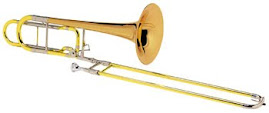
The Wagner tuba is a comparatively rare brass instrument that combines elements of both the horn and the tuba. It was originally created for Richard Wagner's operatic cycle Der Ring des Nibelungen. Since then, other composers have written for it, most notably Anton Bruckner, in whose Symphony No. 7 a quartet of them is first heard in the slow movement in memory of Wagner. The euphonium is sometimes used as a substitute when a Wagner tuba cannot be obtained.
The instrument is built with rotary valves which, like those on the horn, are played with the left hand.
The Wagner tuba nominally exists in two sizes, tenor in B-flat and bass in F, with ranges comparable to those of horns in the same pitches while being less adept at the highest notes. Several 20th-century and later manufacturers have, however, combined the two instruments into a double Wagner tuba in B-flat and F. Wagner tubas are normally written as transposing instruments, but the notation used varies considerably and is a common source of confusion—Wagner himself used three different and incompatible notations in the course of the Ring, and all three of these systems (plus some others) have been used by subsequent composers. An additional source of confusion is the fact that the instruments are invariably designated in orchestral scores simply as "tubas", leaving it sometimes unclear as to whether true tubas or Wagner tubas are intended (for example, the two tenor tubas in Janáček's Sinfonietta are sometimes wrongly assumed to be Wagner tubas).











